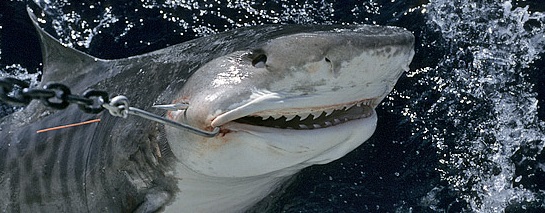Shark cull warning as technology gets good count
Experts have warned against culling sharks because the long term ecological impact cannot be predicted.
With shark culls of various kinds going on around the country, experts say the standard response may be doing more harm than good.
The University of Queensland’s Dr Jennifer Ovenden is an expert in the role of population, evolutionary and molecular genetics in the management of wild fisheries.
“Managing shark populations is very challenging,” she says.
“Like humans, sharks can live for a very long time and their rate of reproduction is comparatively low.
“We need to be particularly careful about the numbers of sharks harvested, either commercially or by culling, from wild populations.
“While fin fish produce millions of eggs and have the potential to rebuild their populations very quickly following harvesting, sharks are very different.”

Dr Ovenden said advances in shark genomics and digital systems have only just enabled researchers to accurately determine the abundance of shark species.
“What we can do right now is estimate the number of sharks in Australian waters, but it will be a number of years before we know if the populations are increasing or decreasing,” she said.
“Ultimately our research will help determine if the recent increase in shark attacks in Australia is due to an increase in shark numbers or to an increase in human interaction.
“We use DNA analysis from individual sharks to give estimates of the number of breeding adults. The digital model confirms this, then predicts the number of juveniles and sub-adults.”
She said the method has already been validated on leopard sharks on the east coast of Queensland, by comparing the estimated number of breeding adults with direct counts of adults in the population.
“Over the coming years, our new technology will allow us to accurately monitor any increases or decreases in shark populations.
“But further research is desperately needed if we are to continue using this unique technology to monitor shark numbers on the east coast of Australia.”








 Print
Print